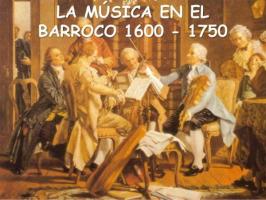13 characteristics of popular MUSIC

Many times we hear a term or concept so often that we take for granted its meaning or all the implications it has. The fact that we live from day to day with something without necessarily knowing its reasons for being can mean that we are ignoring the value or curiosities of something. This is the case of popular music. In this lesson from a TEACHER you will discover what is popular music and characteristics, learning more about this trendy music that involves a great movement in life today.
Within the different musical genres we find the music known as "popular". By popular music we mean all that music aimed at the masses, (the town, where the term comes from "popular") or music that does not require any formal training to be enjoyed. For many years in the history of classical music it was an exclusive context for people with resources who had access to education, turning out to be a sign of wealth and nobility.
Since the information was exclusive, the management of said medium was also exclusive and art was accessible to a reduced niche of society, resulting in different genres of less relevance. Some
types of popular music in previous years they were the song, romance and dance, since his works were disseminated orally.
Image: Slideshare
The biggest turning point for the rise of popular music happens from the 20th century with the birth of Jazz and Rock in the United States, both genders strongly influenced by the African American community. It is from this point that, with the help of newborn media such as radio and television, popular music gets equal or greater relevance than classical music and, for the first time, it is centralized in another geographical area apart from the European one.
Jazz, an original style of popular music
The origin of jazz dates back to blues, a musical structure that comes from the work songs in the cotton fields in the United States during the 19th century, where slaves brought from Africa worked. Many of the "owners" of these slaves taught them about European music for entertainment purposes, causing the Afro-American community to fuse the harmonies of European classical music with the rhythmic richness African.
This community was creating its own musical genre, evolving from the blues to what we know as Jazz, a mainly improvised style. Jazz was gradually introduced to the rest of the American community, reaching the "white" community with the popularity of swing and "Big Bands", with music mainly for the dance. Movies and musicals also played an important role in this regard.
The birth of rock in the 50s
The other crucial point for the development of popular music occurs in the 50s with the birth of Rock, a genre that took the structure and concept of the blues but simplified, this time mostly played by "white" people. Rock bands became strong trends, representing the young community for the first time.
Over time and through the years, popular music developed and separated into hundreds of genres and styles we know today such as funk, disco, bossa nova, salsa, hip-hop, reggae, electronic music, heavy rock, etc.

Image: Slideshare
We conclude this lesson by discovering what the main characteristics of popular music so that, thus, you can better understand this musical genre.
- Presents a specific concept, an idea of identity with which people can feel represented.
- There are thousands of genres and styles.
- Although there are industries more powerful than others, the genres they are not centralized in a single area, but turn out to be a worldwide phenomenon (thanks to the spread of information today).
- Within the genres, there are ramifications with variations of the style (example: heavy metal, death metal, black metal, etc.).
- It merges with other media and performing arts such as video and dance.
- It uses the means of massive communication (radio, television, virtual networks, press, etc.) to spread.
- It is common for the artist to be treated as a brand, a product subject to a concept and a market plan that must be sold to a specific niche of the public.
- Clusters are usually made up of a reduced number of members. In contrast to classical music that can be performed with an orchestra of more than 50 musicians, popular music is usually represented with groups of less than 5 members.
- As for formations, the most common are: soloist and band or group.
- They usually use popular instruments such as the guitar, electric bass, keyboard, drums, piano or keyboard, synthesizers and wind instruments such as the saxophone.
- Most popular works are songs, that is, they have lyrics and song, accompanied by other instruments.
- The themes of the works are varied, but they are usually related to current affairs.
- It is constantly evolving and tends to follow trends in order to remain current to the public's taste.
Now that you know more about the concept of popular music, you may have acquired a broader picture of all the music we know today.



